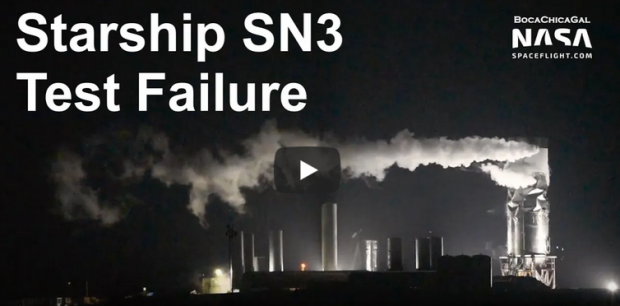
Breaking News
 Elon Tells Rogan the Real Reason Democrats are Prolonging the Government Shutdown [WATCH]
Elon Tells Rogan the Real Reason Democrats are Prolonging the Government Shutdown [WATCH]
 Newsom: Trump Is Trying to Rig the Election -- He Knows GOP Will Lose
Newsom: Trump Is Trying to Rig the Election -- He Knows GOP Will Lose
 There is zero justification for the Department of Justice's silence while the most serious...
There is zero justification for the Department of Justice's silence while the most serious...
 Gabbard Says Trump Has Ended America's Era Of 'Regime Change'
Gabbard Says Trump Has Ended America's Era Of 'Regime Change'
Top Tech News
 The 6 Best LLM Tools To Run Models Locally
The 6 Best LLM Tools To Run Models Locally
 Testing My First Sodium-Ion Solar Battery
Testing My First Sodium-Ion Solar Battery
 A man once paralyzed from the waist down now stands on his own, not with machines or wires,...
A man once paralyzed from the waist down now stands on his own, not with machines or wires,...
 Review: Thumb-sized thermal camera turns your phone into a smart tool
Review: Thumb-sized thermal camera turns your phone into a smart tool
 Army To Bring Nuclear Microreactors To Its Bases By 2028
Army To Bring Nuclear Microreactors To Its Bases By 2028
 Nissan Says It's On Track For Solid-State Batteries That Double EV Range By 2028
Nissan Says It's On Track For Solid-State Batteries That Double EV Range By 2028
 Carbon based computers that run on iron
Carbon based computers that run on iron
 Russia flies strategic cruise missile propelled by a nuclear engine
Russia flies strategic cruise missile propelled by a nuclear engine
 100% Free AC & Heat from SOLAR! Airspool Mini Split AC from Santan Solar | Unboxing & Install
100% Free AC & Heat from SOLAR! Airspool Mini Split AC from Santan Solar | Unboxing & Install
 Engineers Discovered the Spectacular Secret to Making 17x Stronger Cement
Engineers Discovered the Spectacular Secret to Making 17x Stronger Cement
SpaceX's Elon Musk reveals next Starship's Raptor engines, explains latest failure

On April 3rd, SpaceX initiated the third full-scale Starship prototype's first cryogenic (ultra-cold) pressure test by loading the ~30m (100 ft) tall rocket's upper propellant tank with what was likely 400+ metric tons (~900,000 lb) of liquid nitrogen. For several hours, liquid nitrogen – a chemically-neutral propellant simulant – was loaded and offloaded several times. Finally, around 2:07 am local (07:07 UTC), the liquid oxygen tank below the methane tank abruptly crumpled, reminiscent of a plastic bottle with the air partially sucked out of it. After several long seconds of gradual crumpling, gravity did what gravity does and pulled the heavy upper tank to the ground, shredding the rest of the rocket's thin steel skin.
Both unfortunate and a positive development, Musk has recently confirmed Teslarati's earlier speculation that based on videos of the anomaly, a bad test design and operator error(s) – rather than a technical fault of the rocket itself – could have been the cause of Starship SN3's failure. In other words, barring future operator error-related failures, Starship SN3's second cryogenic test went quite well and should mean no delays to Starship SN4's ongoing assembly.
![]()
By Eric Ralph
Posted on April 6, 2020
SpaceX CEO Elon Musk took to Twitter to better explain what happened when the latest full-scale Starship prototype failed during one of its first tests, while later revealing the rocket engines set to power a future prototype's first flight.
On April 3rd, SpaceX initiated the third full-scale Starship prototype's first cryogenic (ultra-cold) pressure test by loading the ~30m (100 ft) tall rocket's upper propellant tank with what was likely 400+ metric tons (~900,000 lb) of liquid nitrogen. For several hours, liquid nitrogen – a chemically-neutral propellant simulant – was loaded and offloaded several times. Finally, around 2:07 am local (07:07 UTC), the liquid oxygen tank below the methane tank abruptly crumpled, reminiscent of a plastic bottle with the air partially sucked out of it. After several long seconds of gradual crumpling, gravity did what gravity does and pulled the heavy upper tank to the ground, shredding the rest of the rocket's thin steel skin.
Both unfortunate and a positive development, Musk has recently confirmed Teslarati's earlier speculation that based on videos of the anomaly, a bad test design and operator error(s) – rather than a technical fault of the rocket itself – could have been the cause of Starship SN3's failure. In other words, barring future operator error-related failures, Starship SN3's second cryogenic test went quite well and should mean no delays to Starship SN4's ongoing assembly.
Particularly in light of Elon Musk's statement that operator error and a bad test design caused Starship SN3's failure, the ship's April 3rd performance was quite impressive. That SN3 remained vertical for several seconds after its aft tank crumpled and likely lost pressure – despite carrying a load equivalent to a fully-loaded Boeing 747 passenger jet – suggests that the vehicle's structure is extremely robust.
Pretty much. Good news is that this was a test configuration error, rather than a design or build mistake. Not enough pressure in the LOX tank ullage to maintain stability with a heavy load in the CH4 tank. This was done with N2.
— Elon Musk (@elonmusk) April 5, 2020



